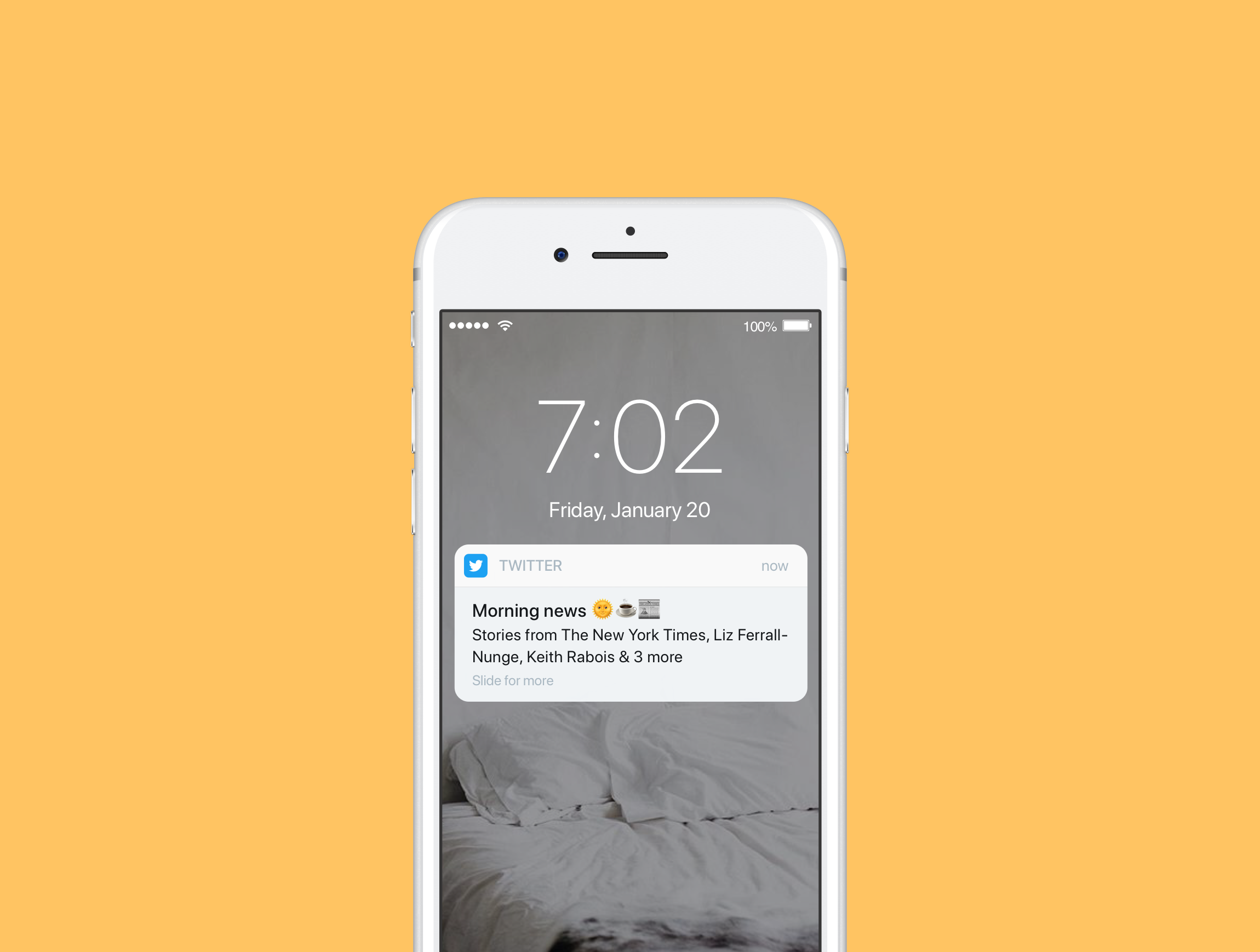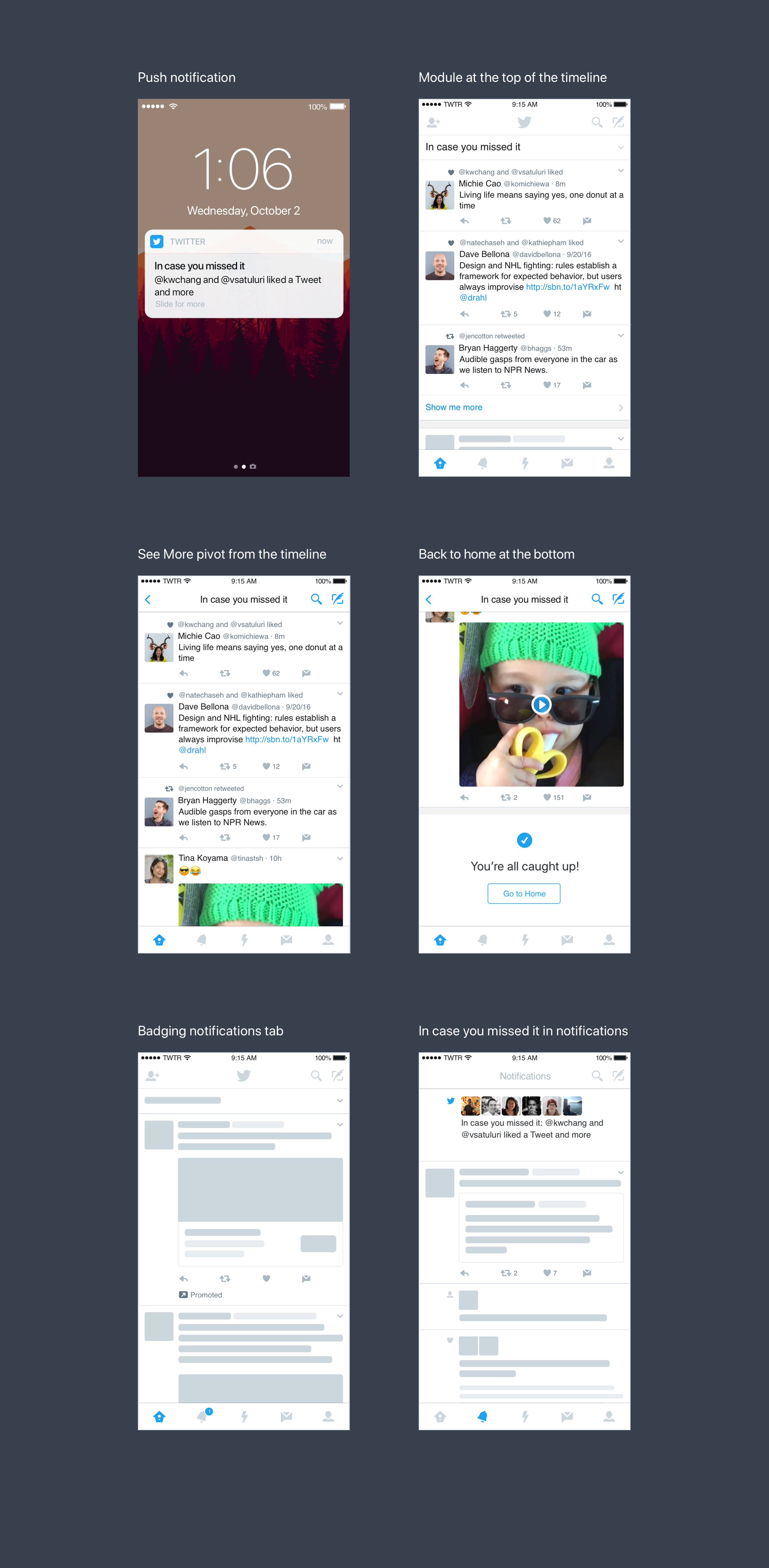Twitter Push to home
Home team
Product design
Business strategy
A common critique of the Twitter home timeline is that it’s a deluge of unorganized content that is difficult to digest. This core product complaint is often pointed to when discussing Twitter’s lack of user growth and retention.
How might we organize this deluge of content and deliver it to users in a productive and delightful manner?
Below is an overview of an attempt to answer this question which took place over the course of a few months. We researched and refined this idea into a pitch to executives which successfully resulted in resourcing for a new work stream within the home team.
Our hypothesis was that we could leverage push notifications to deliver users content from their very own timelines at the most relevant time.
Before building anything, we dug into Twitter timeline consumption research and found:
People find packaged/grouped content helpful
People want different content at different times of day
Highlights as a separate product from the home timeline is confusing
Highlights are a package of recommended Tweets for you, surfaced to you in a collection via a push notification twice a day
We wanted to take the packaged format of Highlights and apply it to home timeline content.
We would then deliver this content based on a variety of inputs: time of day, network engagement, and other factors - so that users are pushed to their home timeline content at the opportune moment to view it.
We believed this would drive utility and engagement.
We started off with a simple experiment to fold Highlights into the home timeline.
We were going to push users to the In case you missed it module in the timeline, which exists today (without push notifications) and include a See More button.
See More will go to Highlights, which will be rebranded as In case you missed it.
Success here would be no net-negative impact on user active minutes or daily active user metrics.
Folding Highlights into the timeline would simplify our product, a net win.
However, we strongly believed we could drive additional user active minutes and daily active user metrics, because:
Users are pushed to the timeline, rather than a separate static view of Tweets, ideally viewing the content and then scrolling (User active minutes)
Users who wouldn’t normally open Twitter daily, will now do so, due to a relevant daily push (daily active users)
Next steps
If the initial experiment was neutral to green we would then experiment with time-based packaged content. News in the morning, gossip in the afternoon, trending articles in the evening etc.,
Then Tweet-velocity packaged push
If multiple people you follow are tweeting about the same string at a given time, we’ll push you to those tweets:
And then velocity-based push with context
Additional context (and scope 😓) for the velocity-based packages:
Terri Burns and I assembled the above into a roadmap and pitched it to the Twitter executive team. We were granted engineering, product, data science and design resources to begin experimentation.
Thanks to Jen Cotton and Deepak Rao for the support to run with the project and to the recommendations engineering team for their constant enthusiasm.







